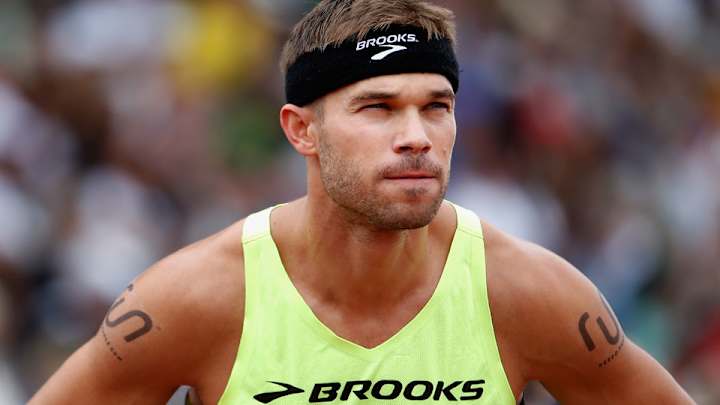Judge dismisses Nick Symmonds' Run Gum lawsuit vs. USOC, USATF

US district judge Michael J McShane has dismissed a lawsuit against the United States Olympic Committee and USA Track and Field. The lawsuit was filed by Run Gum, a company owned by two-time Olympian Nick Symmonds, and looked to change logo restrictions at the U.S. Olympic track and field trials.
Judge McShane determined that the 1978 Amateur Sports Act gives the USOC and USATF implied immunity from the anti-trust violations that were alleged by Rum Gum.
“Because congress charged Defendants with financing the United States' participation in the Olympics, in part by preserving the value of the Olympic brand, Run Gum's challenge fails under an implied grant of immunity,” the ruling read. “USATF and the USOC may exercise control over the apparel worn by competitors on the field of competition at the Olympic Trials, particularly as it relates to individual advertisements and sponsorships that would undercut USOC's fundraising mission. For this reason, USATF's motion, ECF No. 43, and USATF's motion, ECF No. 41, are GRANTED and Run Gum's complaint is DISMISSED.”
Symmonds is a two-time Olympian and six-time U.S. 800-meter champion, who was left off the U.S. national team's roster for the 2015 world track and field championships after failing to sign a mandatory athlete statement of conditions that requires him to wear Nike gear for all team functions. In Jan. 2014, Symmonds signed a contract to run for Brooks Running after a seven-year relationship with Nike. Symmonds believes that by signing the statement of conditions, he would violate his contract with Brooks.
• LAYDEN: Nick Symmonds vs. USA Track is far bigger than just one runner
At the moment, the only logos permitted on an athlete’s uniforms during the Olympic Trials are those belonging to apparel and equipment manufacturers that have been approved by the USOC. USATF has a contract with Nike that runs through 2040.
Run Gum's lawsuit sought an injunction to invalidate the rules, allowing it to advertise on competition clothing worn by endorsed athletes. The judge saw this as detrimental to the USOC and USATF's ability to attract sponsors.
“The logo restrictions in this case directly implicate USOC’s ability to generate revenue for the United States Olympic Team; allowing any company to advertise on competitor apparel would unduly interfere with USOC’s fundraising mission. First, the Regulations prevent a dilution of the Olympic brand. The Regulations permit the USOC and USATF to play a gatekeeping function which preserves the exclusivity-and thus value-of the Olympic symbols and name. By strictly limiting the advertisements that can appear on the field of competition itself, the Defendants can control the use of the Olympic brand and preserve the integrity of their primary fundraising mechanism. Second, the Regulations bolster the value of USOC’s and USATF’s corporate sponsorships. If, instead of purchasing an official sponsorship through USATF, would-be advertisers could instead place their logos directly on high-profile athletes, the value of these corporate sponsorships would necessarily decrease. Accordingly, the Regulations are necessary to implement the clear intent of Congress and to make the ASA’s statutory scheme work. Without them, USOC’s revenue-generating capabilities would be compromised in a way that is plainly repugnant to the text and purpose of the Act.”
Most recently, Symmonds auctioned off nine inches of ad space on his shoulder to T-Mobile CEO John Legere for $21,800 on EBay. The ad space will be covered by an adhesive bandage at competitions to abide by the rules set forth by the IAAF. Symmonds hopes the bandaging raises questions and awareness for the restrictions.
“We are simply looking to level the playing field,” Symmonds said at the time of the lawsuit filing. “It is completely illogical and unfair to allow a very small sector of the market to have total control over the advertising space on an athlete’s competition uniform.”
